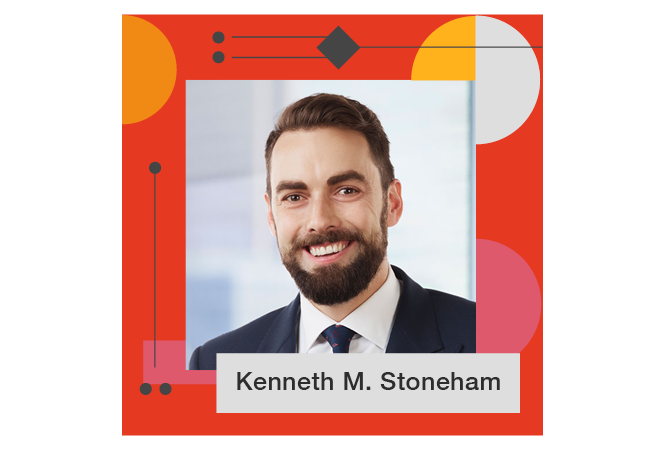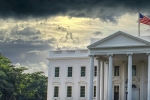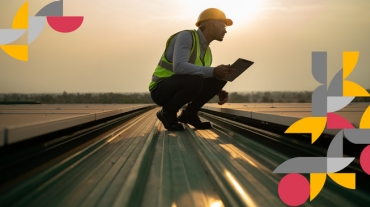
Canada is undertaking a massive modernization of its payments infrastructure, with everything from the real-time rail to cross-border payments ushering in significant change for Canadian banks. Adding to the pace of change are other key developments in financial services, like open banking, the ongoing evolution of crypto and digital currencies and adoption of environmental, social and governance (ESG) strategies. With the right strategies anchored in the trust they’ve built up, Canadian banks have an opportunity to win.
In this Transformation Talks video, PwC Canada’s Payments Leader, Edgar Barbosa and PwC Risk Partner, Ken Stoneham, discuss the path to payments modernization for Canadian banks and what it means for the future of the banking industry.
Ken: Welcome to Transformation Talks, a PwC Canada series on the future of Canadian banking. My name is Ken Stoneham, a partner in PwC’s Risk Assurance Practice. Canadian banks are undergoing a period of significant structural change, and it has major implications for all areas of the business, and through this series, we're bringing you some of the important topics around that change.
Today I'm joined by Edgar Barbosa, our PwC Canada Payments Leader, who's going to talk to us a little bit about payments modernization. Edgar, great to have you here.
Edgar: Thank you for having me.
Ken: Well, just to get us started Edgar, can you give us a little bit of an overview of why payments modernization is so important and why bank executives should be thinking about it right now?
Edgar: Absolutely, Ken. There's a lot of disruption happening in the payments landscape right now.
The first one is around consumer expectations and how they continue to evolve, especially post-pandemic, where most of our lives are being conducted in the digital world. Creating that frictionless ability to move money and conclude your digital journey without any clunkiness is critically important.
The second part that's coming up is changes to the regulation and the framework around payments. Open banking is a big one. We're going to have an open banking regime in Canada in 2023 and 2024, which will change the way in which we initiate payments. Also, we have the Retail Payments Activity Act, which is in pending legislation around payments participants and payments providers, so again, more adjustment in terms of how the ecosystem continues to change.
The last thing is really around some of the new capabilities that are being introduced. Crypto, very hot topic these days, but under open banking, how you create that payment's initiation, all dependent on the Real-Time Rail being available, so real-time is a critically important new capability. And then data richness is being enabled by a new messaging standard called ISO 20022, so a lot of change is happening right now.
Ken: This sounds like a complex challenge and a lot to deal with. What could be the consequences of not acting on a timely basis?
Edgar: Yeah, in a way, that's what some banks are suffering now. Real-Time Rail is the first new rail in Canada in over 30 years. If you don't react now, the problem is that pace of change continues to accelerate, and we're finding that new capabilities continue to emerge. Things like QR codes and how they connect into different aspects, and they can move data seamlessly, are a manifestation of, if you don't act quickly on some of the changes that are coming, you're left behind for payments 3.0, if you will, when that change comes about.
Ken: I understand real-time payments is coming to Canada in 2023, so what are some of the considerations that executives and bankers should be thinking about as they get ready for that?
Edgar: Real-time payments, the name kind of says it, it's instant, final.
The first one is, it introduces new capabilities and use cases. Request to pay is one of the ones that I like to use as an example. If you happen to be vacationing in Florida and forgot to pay your insurance premium, the company can now send you a request to pay, which means you can submit that payment without having to lapse your insurance coverage, so better customer experience.
There's also the ability to provide overlay services, things like liquidity management for companies, or tokenization, and even advanced fraud detection, so some things that make the system a little bit more trustworthy.
I also think about it in terms of the data richness. We talked about ISO 20022, a lot more data that can be embedded into a payment right now, and it's not just the type of data, it's the amount of data, but also links, PDFs, and so that ability to create an ecosystem of payments in the digital world is supported by it, right.
Then the last one that I think is really quite interesting is what it can enable. Real-time payments are a precursor to open banking. With that, maybe there's an opportunity to open up access to the payments rail, so there's a lot of interesting change that it can enable, based on real-time payments.
Ken: You were talking about a few different things in there and I couldn't help thinking about some of the things we've been hearing in the news around crypto and central bank digital currency. How do those topics play into this?
Edgar: That's an interesting one, right? Crypto. Just today, Ken, what's Bitcoin up, 2.5% in one day? You can't pay with that. When I think about crypto, crypto, in and of itself, it's an interesting disruption, because it's digitally native, right? It's meant for the digital world. What I don't think we've figured out yet, as an economy, is are cryptocurrencies an asset or a way to exchange value? I think the real catalyst here is going to be the adoption of Central Bank Digital Currencies. Those are actual fiat currencies that central banks can use to facilitate transactions in the digital economy. Right now, there are over 90 central banks considering the introduction of CBDCs, including the Bank of Canada.
Ken: Clearly real-time payments, and the Real-Time Rails are coming, but that's not the only thing that's happening in payments modernization, so what are some of the other areas to think about?
Edgar: With all of these new capabilities, Ken, the other part that's really important is around that notion of protect, creating trust in the system, keeping the bad agents out of it. And so, upskilling of your cyber capabilities, of your fraud, your transaction monitoring capabilities, ensuring that those are fit for purpose in the real-time world are critical things that banks should be thinking about.
The other part that's important is how do you monetize the new capability and the data that's available with those payments to create value for yourself, for your corporate customers, and also for Canadians. It's an interesting period of disruption that can drive a lot of innovation, and hopefully for the greater good of Canada as a whole.
Ken: As you think about some of those critical success factors, what are some of the operational elements that banks need to be thinking about as they prepare for this?
Edgar: You're moving from this setup, which is based on the traditional 9:00 to 5:00 hours to a 24/7/365 requirement for the digital world. With that, you need to evolve your capabilities, upskill your people, and introduce new foundational enablers.
When I think about that, I think, for example, around AI. What type of AI can you deploy to help you with that fraud monitoring in real-time, and how do you upskill your workforce to be able to consume the recommendations that the AI provides, make analytics decisions that help you facilitate a proofing and resilient approach to how transactions move in real-time?
Ken: Really interesting, because there are definitely some capabilities and workforce changes that have to happen, but capabilities that are in high demand everywhere right now, so definitely an opportunity and a need to think differently about how you deliver.
Edgar: Yeah, absolutely, absolutely, because as you know, skilled workforce right now is hard to find, and especially as you create some of those new labor skills that are required to operate in this new fashion, it's critically important to think about your resource management, not just from a functional perspective, but also from an organizational perspective, because you might need to have surges or readjust or redeploy. Some of those core capabilities are important, and those core skills need to be transferable, as well.
Ken: Yep, so really doing things differently than the traditional ways. One other thing, just thinking about this topic, and I'd feel remiss if I didn't ask about it, is ESG. Any ESG considerations to think about in payments modernization?
Edgar: ESG is focal to who you are as an organization and how your beliefs align to corporate objectives, corporate goals, but also how you connect with your customers and what matters to them. Payments, especially data-rich payments, have the ability to help you support some of your ESG objectives, for example, demonstrating that what you have declared are your corporate responsibility goals are being met, in terms of how you move transactions. It also creates that opportunity for you to connect with your customers in a very personal manner, in terms of what matters to them. With that, your purpose and your strategy can come together. When you think about ESG and payments, what I tend to think about is what value can you create that is purpose and value driven, which means your customers will connect with it and go on that journey with you.
Ken: I love it, and I love the connection of the topic to purpose and strategy. We covered a lot of really good ground today. If you had to give our viewers three things to think about as they look ahead and ready themselves for payments modernization and what's coming, what would those three things be?
Edgar: Wow. That's a great question and as a bit of a payments nerd it takes me forever to answer that question, but I'm going to try to be succinct. There are three things that I'd like to think about.
I would start with strategy. Have you created the right operating model? Do you have the right offerings from a payments capability perspective that allow you to capitalize and monetize some of these new capabilities that are being created? Do you have the right stewardship around your data, and have you created the right level of resiliency and proofing around the business?
With that comes the second one, which is around technology. This is very much a technically enabled change, so what is your tech strategy, in terms of updating your systems to work 24/7 in the digital world and conduct transactions that are increasingly becoming more transparent, more frequent, and more rapid?
Then the last thing is trust. Am I doing what I said I would do? How do we keep the bad agents out? How do we ensure that the people that are participating are doing things as they should? And how do we connect that with our values and what our purpose as an organization is? So, it's an interesting time, Ken, undoubtedly.
Ken: That was a great recap and, Edgar, I really enjoyed the conversation. For our viewers, thanks so much for joining us. Please stay tuned for the next Transformation Talks from PwC.
"There's a lot of disruption happening in the payments landscape right now. If you don't act quickly you'll be left behind for payments 3.0, when that change comes about."
About the speakers
.png)
Edgar Barbosa is a Partner and Canadian Payments Leader at PwC Canada. He brings more than 20 years of experience in financial services, with a significant focus on leading large payments and credit card transformation initiatives in Canada and the United States.

Kenneth M. Stoneham is a Risk Assurance Services Partner at PwC Canada. He specializes in risk management and information systems, with a particular focus on the financial services industry.
Contact us






















